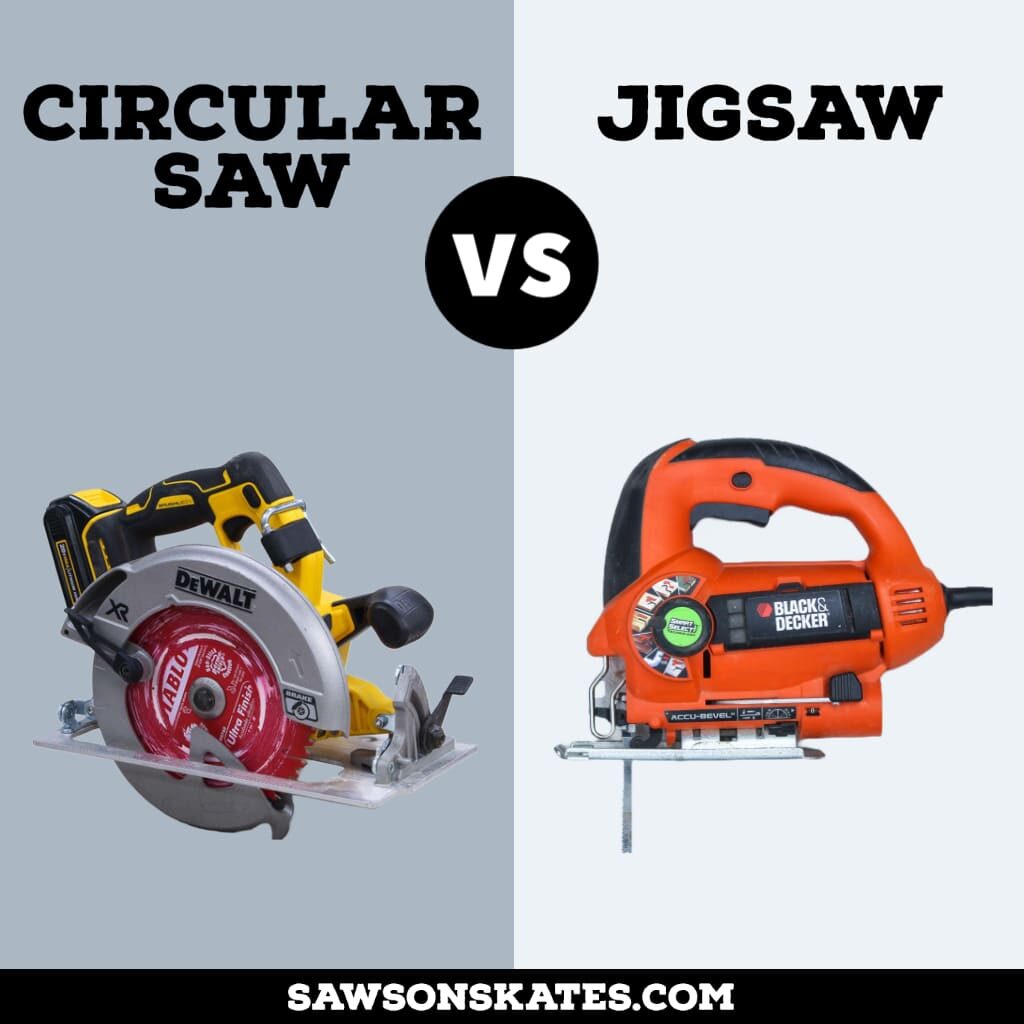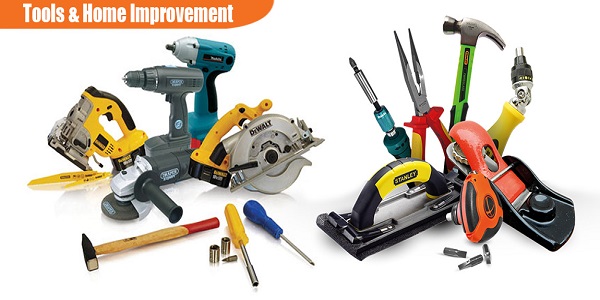Circular saws and jigsaws are both essential tools in woodworking. They each have unique strengths and uses.
Choosing the right saw can make your projects easier and more efficient. So, how do you decide which one suits your needs? Understanding the differences between a circular saw and a jigsaw is crucial for any DIY enthusiast or professional carpenter.
These tools vary in design, functionality, and ideal applications. A circular saw excels in making straight, long cuts, perfect for larger projects. On the other hand, a jigsaw is versatile and ideal for intricate cuts and curves. This comparison will help you grasp each tool’s capabilities, allowing you to pick the best option for your tasks. Let’s explore their features and find the right fit for your toolbox.

Credit: www.youtube.com
Tool Basics
When diving into the world of DIY projects or professional carpentry, understanding the basics of your tools is crucial. Both circular saws and jigsaws have their unique features and uses. Knowing these differences can make your tasks more efficient and enjoyable. Have you ever grabbed a tool, only to realize it wasn’t quite right for the job? That’s why understanding tool basics is essential.
Circular Saw Features
Circular saws are known for their power and precision. They use a round blade to make straight cuts in wood, metal, or plastic. Imagine slicing through a wooden board like a hot knife through butter. That’s the circular saw’s magic.
These saws are perfect for large projects where speed matters. They come with adjustable blades for various depths, allowing you to tackle thick materials effortlessly. If you’re building a deck or cutting plywood, a circular saw is your best friend.
Safety is paramount with circular saws. They can be intimidating, but with features like blade guards and electric brakes, they help keep you safe. Remember to always wear protective gear and check your settings before starting.
Jigsaw Features
Jigsaws are the artists of the saw world. They excel in making curved and intricate cuts. If your project involves detailed work like cutting shapes or patterns, reach for a jigsaw. It’s like having a pencil that can cut through wood.
These tools are lightweight and versatile, making them ideal for smaller projects. You can adjust the blade speed for precision, giving you control over delicate cuts. Whether you’re working on a DIY craft or a complex carpentry project, a jigsaw can handle it.
Jigsaws are generally safer than circular saws, with less kickback and easier handling. They offer a great balance of power and precision, especially for beginners. Have you ever felt hesitant using a saw? A jigsaw can ease that fear and boost your confidence.
So, which saw suits your needs? The answer depends on your project and comfort level. Each has its strengths, but understanding their basics will guide you in making the right choice for your next woodworking adventure.
Cutting Capabilities
When it comes to woodworking, understanding the cutting capabilities of your tools can make a significant difference in the quality and precision of your projects. Both circular saws and jigsaws have unique strengths and limitations. Whether you’re crafting furniture or tackling DIY home improvements, choosing the right saw for your task is crucial. Let’s explore the differences in cutting capabilities between circular saws and jigsaws, focusing on straight and curved cuts.
Straight Cuts
If you’ve ever tried to achieve a perfectly straight cut, you know it requires precision and control. Circular saws excel in this area, thanks to their robust design and powerful motor. Imagine trying to cut through a thick piece of plywood. A circular saw can glide through it with ease, ensuring a clean, straight edge.
On the other hand, jigsaws can manage straight cuts but might struggle with thicker materials. They’re best suited for thinner woods or when portability is a priority. If you prioritize accuracy over speed, a circular saw might be your best bet. However, for lighter tasks, a jigsaw can still get the job done efficiently.
Curved Cuts
Curved cuts are where jigsaws truly shine. Their slim blades allow for intricate patterns and detailed designs, making them ideal for artistic projects. Picture crafting a custom-shaped shelf or a decorative piece; a jigsaw provides the flexibility you need.
Circular saws, with their larger blades, aren’t designed for curves. Trying to maneuver a circular saw into a curve can be frustrating and potentially dangerous. If your project requires a lot of curves, a jigsaw offers the versatility to turn your vision into reality. Have you ever attempted a curved cut with a circular saw? It’s like trying to fit a square peg into a round hole.
Ultimately, understanding the cutting capabilities of these tools empowers you to choose wisely. Each saw has its place, and knowing their strengths can save you time and effort in your projects. Which tool do you think would best suit your next creative endeavor?
Material Versatility
Understanding the material versatility of saws is crucial for any DIY enthusiast. Circular saws and jigsaws are popular choices for different projects. Each tool offers unique advantages depending on the material being cut. This section explores how both saws perform with various materials.
Woodwork Applications
Circular saws excel in cutting through thick wood. They provide straight and accurate cuts quickly. Ideal for framing, decking, and sheet materials. Their powerful motor handles large volumes of wood with ease. Jigsaws, in contrast, are better for intricate woodwork. They allow for curved and detailed cuts. Perfect for crafting and decorative projects. Choose based on the complexity of your woodworking task.
Metal And Plastic Uses
Circular saws can cut metal when fitted with the right blade. They ensure precision and speed for metal sheets. Useful for construction and renovation projects. Jigsaws are suitable for cutting thinner metal. They offer better control for detailed metalwork. For plastics, both saws perform well. Circular saws cut large plastic sheets effortlessly. Jigsaws handle detailed plastic shapes and curves. Select the saw based on your project’s requirements.

Credit: sawsonskates.com
Portability And Ease Of Use
Choosing the right saw depends on portability and ease of use. Circular saws and jigsaws are both popular tools. Each has its own benefits in these areas.
Weight Considerations
Circular saws are often heavier than jigsaws. This weight gives them stability. But it can be tiring for long jobs. Jigsaws, on the other hand, are usually lighter. They are easier to carry and use for extended periods. If you need to move your tool often, the jigsaw may be a better choice.
Handling And Control
Circular saws provide powerful and straight cuts. Their design helps keep them steady. This makes them ideal for straight lines. But they require skill to manage. Jigsaws excel at intricate cuts. They are easy to maneuver around curves. Their lightweight nature allows for better control in tight spaces.
Safety Measures
Circular saws and jigsaws require careful safety measures due to their sharp blades. Always wear protective eyewear and gloves. Maintain a firm grip on the tool, ensuring stability to prevent accidents.
When comparing tools like the circular saw and jigsaw, safety measures are key. These powerful tools can create beautiful craftsmanship, but they also demand respect and caution. Without proper precautions, you risk injury. Whether you’re a seasoned woodworker or a DIY enthusiast, understanding and implementing safety measures is crucial.Protective Gear
Start with the basics: wear protective gear. Safety glasses are essential to shield your eyes from flying debris. Always use ear protection to guard against the loud noise both tools produce. Gloves can protect your hands but make sure they fit snugly to avoid any loose material getting caught in the saw. Think about your clothing too. Loose-fitting garments can be hazardous. Opt for fitted clothes and avoid wearing jewelry. These simple steps can significantly reduce your risk of injury.Safe Operating Practices
Operating these tools safely involves more than just turning them on. Always inspect your tools before use. Check for damaged cords or loose parts. Ensure that the blades are sharp and correctly installed. A dull blade can cause the tool to bind, leading to dangerous kickbacks. Secure your workpiece properly. Use clamps to hold it in place, freeing both hands to control the tool. This not only increases accuracy but also safety. A stable workpiece reduces the risk of it moving unexpectedly, which could result in injury. Are you familiar with the concept of a “safety zone”? Keep a clear area around your workspace. By ensuring your environment is free of obstacles, you can focus on the task without distraction. Have you ever rushed through a project only to regret it later? Take your time. Rushing increases mistakes, and mistakes can lead to accidents. Remember, it’s better to work slowly and safely than quickly and carelessly. Implementing these safety measures can make your woodworking experience not only more enjoyable but also much safer. Your health and safety are paramount, so always prioritize them over speed or convenience.Cost And Value
Choosing between a circular saw and a jigsaw can be challenging. Cost and value play a crucial role in decision-making. Understanding the investment and benefits of each tool helps make an informed choice. Let’s dive into the aspects of initial investment and long-term value.
Initial Investment
Circular saws often cost more than jigsaws. Their powerful motors and durable blades contribute to the price. They are designed for heavy-duty tasks, which justifies the expense. Jigsaws are generally more affordable. They are perfect for intricate cuts and detailed work. This makes them a great option for budget-conscious buyers. Consider the type of projects you plan to tackle before investing.
Long-term Value
A circular saw offers significant long-term value. Its versatility and durability ensure it lasts for years. It handles various materials with ease. This makes it a staple in workshops. Jigsaws, with their precision, provide value for specific tasks. They excel in cutting curves and patterns. Their lightweight design offers convenience and ease of use. Each tool provides unique benefits based on your needs.
Project Types
Circular saws excel in cutting straight lines through thick materials, perfect for construction tasks. Jigsaws are versatile, handling curves and intricate designs on thinner materials, ideal for detailed projects. Each tool offers unique benefits, making them essential for different woodworking and DIY needs.
When you’re embarking on a new project, choosing the right tools can make all the difference. Whether you’re renovating your home or diving into a crafty DIY endeavor, the type of saw you select will greatly influence your work’s quality and ease. Circular saws and jigsaws are both popular choices, but each shines in different scenarios. Let’s delve into which saw works best for various project types.Home Renovation Projects
Circular saws are a go-to for many home renovation tasks. They’re powerful and efficient, making them ideal for cutting through large sheets of wood or plywood. Imagine you’re redoing your floors or building a deck—circular saws will swiftly handle those long, straight cuts with precision. On the other hand, jigsaws might surprise you with their versatility in smaller renovation tasks. They excel in cutting curves and intricate shapes. If you’re installing new kitchen cabinets or custom shelves, a jigsaw allows you to maneuver tight corners and design unique shapes effortlessly. Consider the scope of your renovation. Are you working on broad structures or intricate details? Your answer will guide you toward the right saw.Craft And Diy Projects
Craft enthusiasts often find jigsaws indispensable. Their ability to cut curves and detailed shapes makes them perfect for crafting personalized wooden signs or decorative items. If you’re passionate about DIY projects, think of the jigsaw as your artistic ally, enabling creativity without limits. Circular saws, while less common in crafts, still have their place. If you’re building furniture or creating large-scale art pieces, their power and precision can save time and effort. They help when straight lines and uniform cuts are your project’s backbone. What kind of DIY projects do you love? Whether it’s intricate designs or large structures, choosing the right saw can turn your vision into reality with ease. In both renovation and craft scenarios, the saw you select can shape the outcome of your project. By understanding your project’s needs, you equip yourself with the right tools to create something truly remarkable.
Credit: toolguyd.com
Making The Right Choice
Choosing between a circular saw and a jigsaw can be challenging. Both tools serve different purposes and excel in specific tasks. Understanding your needs helps in making an informed choice. Each saw has unique features. Knowing these can make your decision easier.
Assessing Project Needs
Consider the type of projects you will tackle. Circular saws are powerful and cut through thick materials. They are ideal for straight cuts in wood or metal. Jigsaws, on the other hand, are perfect for intricate designs. They handle curves and detailed work efficiently.
Think about the material you often use. Circular saws work well with hardwood and large sheets. Jigsaws offer precision in cutting softer materials. For versatility in cutting shapes, a jigsaw is the best fit.
Budget And Skill Level
Budget plays a crucial role in selecting a saw. Circular saws usually cost more due to their power and capacity. Jigsaws are typically more affordable. They are also user-friendly, great for beginners. Consider the skills you possess. Circular saws require a steady hand and experience. Jigsaws are easier for those new to woodworking.
Evaluate what you can afford and manage skill-wise. This ensures you get the best tool for your needs. Choose a saw that matches both your budget and expertise level.
Frequently Asked Questions
Is A Jigsaw Better Than A Circular Saw?
A jigsaw excels at intricate cuts, curves, and versatility, while a circular saw is better for straight cuts and speed. Choose based on your project needs and material type. Each tool serves distinct purposes and complements the other in a well-equipped workshop.
Can I Cut A Straight Line With A Jigsaw?
Yes, you can cut straight lines with a jigsaw. Use a straightedge guide for accuracy. Secure the material firmly to avoid movement. Maintain a steady hand and consistent speed for the best results. Adjust the blade type based on the material for clean cuts.
What Are The Disadvantages Of A Circular Saw?
Circular saws can be noisy, increasing the risk of hearing damage. They also produce dust, reducing air quality. These tools can be dangerous if mishandled, leading to potential injury. Accurate cuts can be challenging due to vibrations. Additionally, they require regular maintenance for optimal performance.
What Is The Most Versatile Saw For Diy?
The most versatile saw for DIY projects is the jigsaw. It cuts curves, straight lines, and various materials. Lightweight and easy to handle, it offers precision for detailed work. With interchangeable blades, it adapts to wood, metal, and plastic, making it a must-have tool for home improvement enthusiasts.
Conclusion
Choosing between a circular saw and jigsaw depends on your project needs. Circular saws cut straight lines in thicker materials. Jigsaws excel at cutting curves and intricate shapes. Think about what you will build. The right tool makes tasks easier.
Safety is crucial with both tools. Always wear protective gear. Understand each tool’s strengths. Practice makes you better. For straight, long cuts, opt for a circular saw. For detailed curves, a jigsaw is ideal. Both saws are valuable in any toolbox.
Enjoy your woodworking projects with the right tool in hand.


